- Print
- DarkLight
- PDF
Print Formatting Template Management
- Print
- DarkLight
- PDF
Purpose
The purpose of this documentation is to describe how to create, edit and manage Print Formatting Templates.
Audience
Content Administrators and Lender Executives.
Print Formatting Template Overview
The Print Formatting Template tool allows Content Administrators and Lender Executives to create and modify the Print Formatting Templates used by the Online Review Memo and Engagement Letter tools. Print Formatting Templates define how Review Memos and Engagement Letters appear when printed. They define the layout for the header, footer, and margins.
To access the Print Formatting Template tool, click the Settings button in the upper navigation menu, then click Form Settings. 
On the Form Settings page, in the Templates section, click View Templates.
On the Templates page, in the Print Formatting Templates section, click View Templates.

The Print Formatting Templates page can also be reached via the slide-out menu found on the Templates, Company Defaults, and Review Memo Templates pages. Click on the three-lines icon in the upper left-hand corner of the page to expose the slide-out menu.

The slide-out menu will be exposed. Click Print Formatting Templates to open the Print Formatting Templates page.

The Print Formatting Templates page will open.

A. Add New Print Formatting Template: Click to create a new Print Formatting Template.
B. Search: Enter a search phrase to filter the Print Formatting Templates table by that phrase. The search field allows partial phrases and will begin to filter the list of Service Types as the phrase is entered.
a. The Name, Description, Last Updated, and Created By fields are all included in the search.
C. Template Name: Click the blue Template Name link to open that Template in an editable format.
D. Active/Inactive: Click to make the Print Formatting Template active/inactive.
Inactive templates are not available for selection in Company Defaults and as such will not be available for use by Lender Managers completing Review Memos and editing RFPs.
A template that is set as a default in Company Defaults will be active (On) and grayed out. It will not be possible to mark it as inactive (Off) as long as it is set as a default.
E. Actions: Click to expose a menu. Note that if the template is set as the Collateral360 system default print formatting template in Company Defaults, the only menu button will be Duplicate Print Format.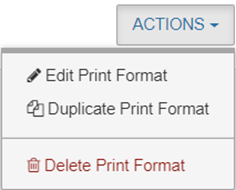
Edit Print Format: Opens the template in an editable format.
Duplicate Print Format: Creates a copy of the template and opens it in an editable format.
Delete Print Format: Click to delete the template. A pop-up window will require confirmation.
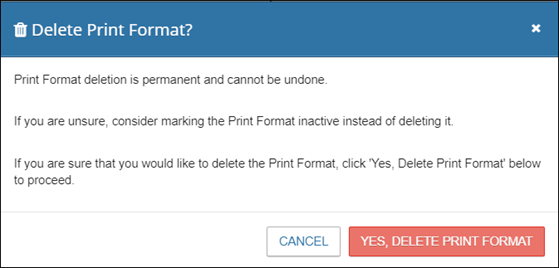
Note:
If the Print Formatting Template is set as a default in Company Defaults, the Delete Print Format button will be grayed out and cannot be clicked.
Add New Print Formatting Template
There are two methods for creating a new Print Formatting Template.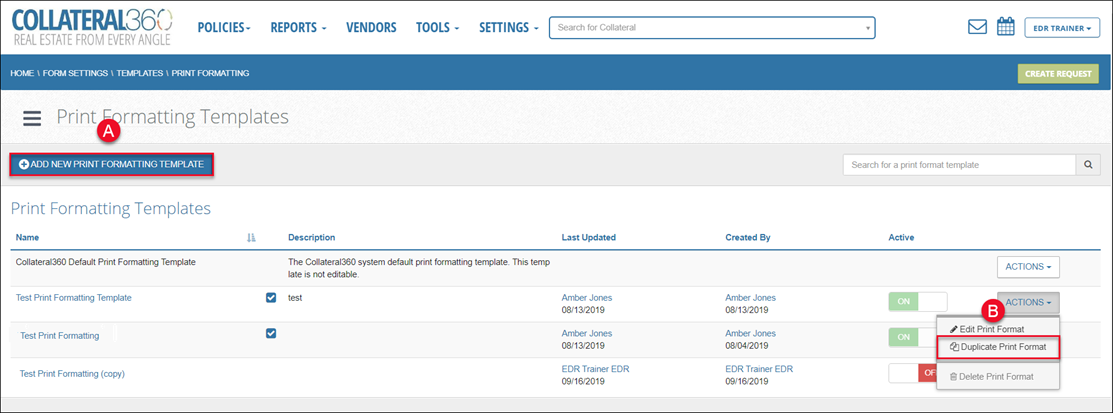
A. Add New Print Formatting Template: This creates a new, completely blank template.
B. Duplicate Print Format: This creates a copy of the selected template and appends “(Copy)” to the Template Name.
A new/copied Print Formatting Template will open.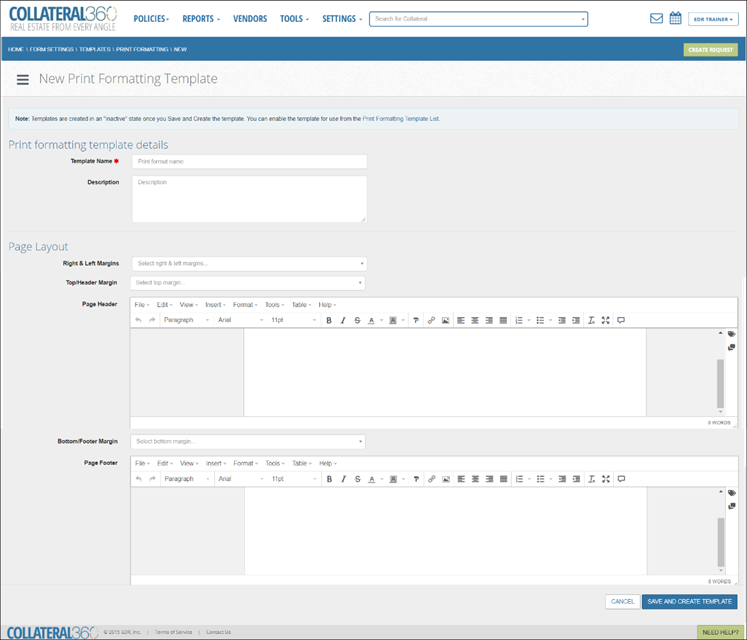
The page is broken into four main sets of functions (from top to bottom):
Print formatting template details: Enter a Template Name and Description.
Page Layout: This is where right and left margins, the header, and footer are defined.
Change History: View a log of revisions to the template. Note that this will not be visible until the template has been saved.
Sticky Footer: The sticky footer is always in view at the bottom of the page. It contains Cancel and Save and Create Template buttons.
Print Formatting Template Details
The Print formatting template details allows you to define a Template Name and Description.

Template Name: This is a required field. The Template Name must be unique; attempting to create a template with a Template Name that already exists will produce an error message.
Description: This is an optional field with a 255-character limit.
Default for: This field is read only; if the template has been defined as a default in Company Defaults, it will be displayed here. If it has not been defined as a default, it will list “N/A”.
Page Layout
The Page Layout section is where Print Formatting settings will be made. It is also where any content, such as logos, page numbers, etc. will be added to the header and footer.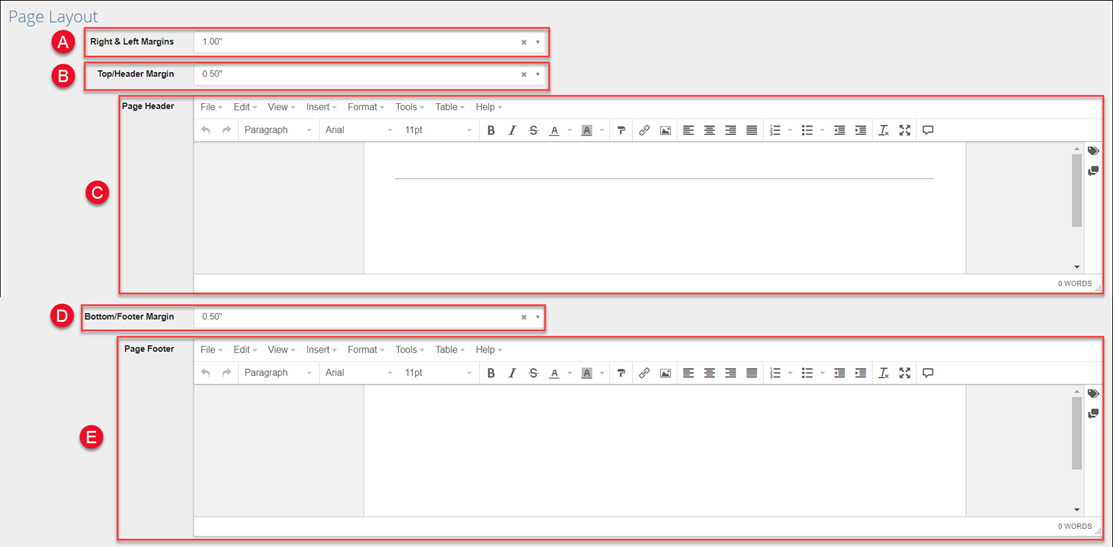
A. Right & Left Margins: Define the margins for the entire document.
B. Top/Header Margin: Define the margin for the top of the page.
C. Page Header: Enter header content, such as logos, copyright information, page numbers, etc. Refer to Header and Footer Content for detailed instructions.
D. Bottom/Footer Margin: Define the margin for the bottom of the page.
E. Page Footer: Enter footer content, such as logos, copyright information, page numbers, etc. Refer to Header and Footer Content for detailed instructions.
Header and Footer Content
The Page Header and Page Footer sections allow you to add text, images, and more to the header and footer of the Print Formatting Template. 
The Page Header and Page Footer sections include the following important functionality:
Variables: Variables can be inserted in the Print Formatting Template. A Variable will dynamically display the relevant value for that Variable. A common usage is inserting the Page Number Variable in the footer.
Comments: Comments can be added to a Print Formatting Template for other users to see. They are a tool for communicating internally with other Lender Executives users about the Print Formatting Template.
Toolbar: The top toolbar includes the File, Edit, View, Insert, Format, Tools, Table, and Help menus.
Lower Toolbar: The Lower Toolbar includes buttons for defining fonts, aligning text, inserting images, and more.
Tables: Tables can be inserted via the Insert button on the Toolbar and via the Table button on the Toolbar.
Variables
Variables appear as yellow fields in the Print Formatting Template.

In the example above, Page Number is a Variable.
Each Variable will populate the relevant, Job-specific information for that Variable type in Review Memos and RFPs that use the template. For example, the Page Number Variable in the example above will display the actual page number in the footer of each page of the Review Memo or RFP.
Variables can be inserted by clicking the tag symbol in the upper right-hand corner of the document.

Click on a Variable header, such as Collateral Information or Service Information, to expose the Variables nested beneath it. Click on a Variable to insert it in the Print Formatting Template in the current location of the cursor.
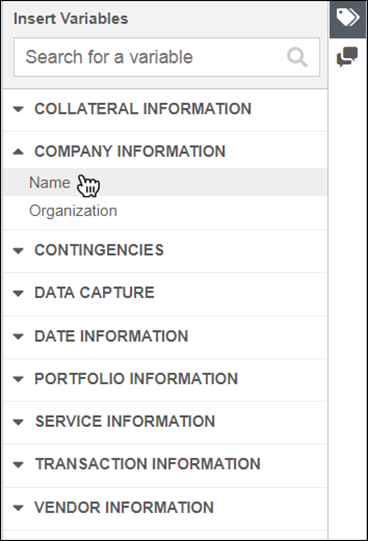
The appearance of some Variables can be modified. The appearance options available are based on the type of Variable – text or numerical.
Click on a Variable and then click the gear symbol to open a modal.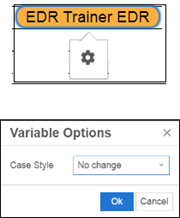
Text Variables have the following four options:
No change (Maintains the existing formatting from the source, such as the SRF or RFP)
All uppercase
Capitalize first word
Title style
Numerical Variables have the following eight options:
$1,234 (currency symbol and thousands separator)
$1234 (currency symbol and no thousands separator)
$1234.00 (currency symbol and two decimal points)
$1,234.00 (currency symbol, thousands separator, and two decimal points)
1234 (no currency symbol, thousands separator, or decimal points)
1,234 (thousands separator)
1234.00 (two decimal points)
1,234.00 (thousands separator and two decimal points)
Any change made to a Variable’s options will be applied solely to the current Print Formatting Template.
Comments
Comments can be inserted in the Page Header and Page Footer. These Comments allow you to communicate with other users who are able to view the Print Formatting Template. Note: Only users viewing the Print Formatting Template in the Forms section of the Collateral360 site will see the Comments; Comments will not be seen by Lender Managers using the Print Formatting Template as part of the review process.
To insert a Comment, click the Comment bubble icon in the upper right-hand corner of the Print Formatting Template document.

The Comment interface will open in the right-hand side of the screen.
When the Comment interface has been opened, existing Comments will be represented in the body of the document by blue bubbles.
Click on a blue bubble to open the Comment in the Comment interface on the right.
The original Comment can be responded to by entering text in the text box below the original Comment and then clicking Save.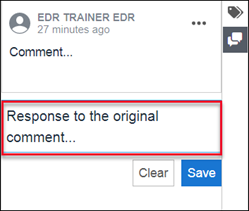
Once the Comment response has been saved, it will then appear beneath the original Comment whenever the Comment bubble is clicked in the document.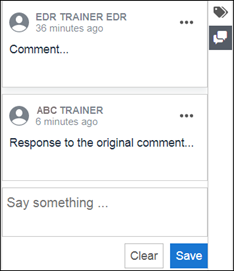
A Comment you have posted can be edited or deleted. Click on the three dots in the upper right-hand corner of the Comment to expose a menu with two options:

Delete Comment OR Delete Conversation: One of two button labels will be listed.
If there’s a single Comment, or if attempting to delete the first Comment in a multi-Comment thread, the button will read ‘Delete Conversation.’ Note that deleting the first Comment in a multi-Comment thread will delete all Comments in the thread, including those made by other users.
If clicking on a secondary, tertiary (etc.) Comment, the button will be labelled ‘Delete.’
Edit: Opens the Comment for editing. Click Save to save the changes after editing or click Cancel to discard the changes.
To insert a Comment, click a location in the template, or highlight text or an image. Then, click the Comments icon to open the Comments interface.
Enter the desired text, then click Save. The Comment will be inserted at the location selected/on the text or image highlighted.
There are two additional methods for inserting a Comment: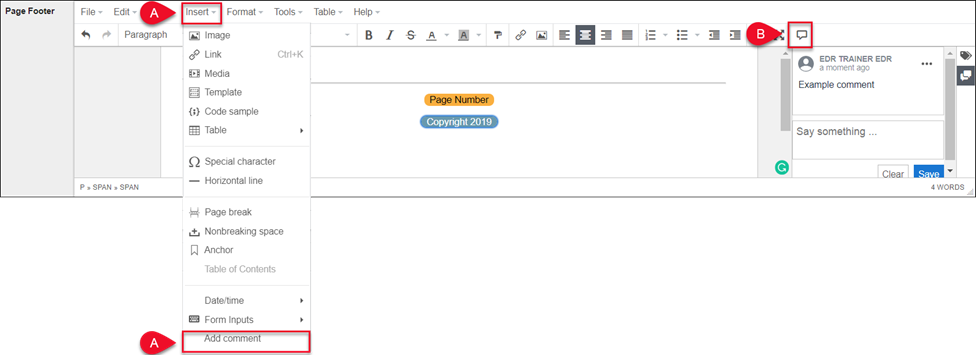
A. Click Insert in the toolbar at the top of the document, then click Add Comment. The Comments interface will open.
B. Click the Comment icon in the toolbar at the top of the document. The Comments interface will open.
Toolbar
There’s an extensive suite of tools for working with the Print Formatting Template.
1. | FILE New Document: Replaces the existing Review Memo Template body with a completely blank copy. Note that this will remove formatting, logo, Variables, text, tables, etc.
|
|
2. | EDIT
|
|
3. | VIEW
|
|
4. | INSERT
|
|
5. | FORMAT
|
|
6. | TOOLS
|
|
7. | TABLE
|
|
8. | HELP
|
|
Lower Toolbar
The Lower Toolbar includes buttons for formatting text, inserting images, adding Comments, and more. 
From left to right:
Undo: Undoes the last change made to the document. |
|
Redo: Reverses the action of the last Undo. |
|
Text Formatting: Applies formatting to selected text and/or type new text in the chosen format. Options include paragraph, headings 1 – 6, and preformatted. |
|
Font Family: Applies a font type to selected text and/or type new text in the chosen font family. |
|
Font Sizes: Applies a font size to selected text and/or type new text in the chosen font size. |
|
Bold: Applies bold formatting to selected text and/or type new text in with bold formatting applied. |
|
Italic: Applies bold formatting to selected text and/or type new text with italic formatting applied. |
|
Strikethrough: Applies bold formatting to selected text and/or type new text with italic formatting applied. |
|
Text color: Applies a color to selected text and/or type new text in the color chosen. |
|
Background color: Applies a background color to selected text and/or type new text with the background color applied. |
|
Format Painter: Allows the user to apply the formatting of one block of text to another block of text. Select text with the desired formatting, click the Format Painter button, then select text to apply the formatting to. |
|
Insert/edit link: Opens a modal that allows the user to insert a link in the review memo document. Before inserting a link, highlight text or an image. If no text or image is highlighted, the link will not be visible or clickable. |
|
Insert/edit image: Opens a modal that allows the user to upload or link to an image, apply a description, and define its dimensions. The image will be inserted wherever the cursor was placed when Insert>Image was clicked. |
|
Align left: Left-aligns a block of text. |
|
Align center: Center-aligns a block of text. |
|
Align right: Right-aligns a block of text. |
|
Justify: Justifies a block of text. |
|
Numbered list: Formats selected text as a numbered list. If no text is selected, it will start a new numbered list. |
|
Bullet list: Formats selected text as a bulleted list. If no text is selected, it will start a new bulleted list. |
|
Decrease indent: Decreases the indent of a block of text. |
|
Increase indent: Increases the indent of a block of text. |
|
Clear formatting: Clears the formatting of a block of text. |
|
Fullscreen: Expands the review memo document into full-screen mode. |
|
Add comment: Add Comment: Inserts a Comment at the current location of the cursor within the Review Memo Template. Upon clicking the Add comment button, a new Comment text box is opened in the Comments menu on the right-hand side of the screen. Enter the Comment text and then click Save to add the Comment. |
|
Update Variables: Updates the values for all the Variables in the Review Memo document. Note that every time the Review Memo is opened, Variables are updated automatically, so it is not required to click Update Variables. |
|
Tables
Click within a table in the template to expose a menu of table options.![]()
| Table Properties: Opens a modal that allows the user to define table properties, such as width, height, border, and alignment. |
| Delete table: Deletes the table in which the cursor is currently placed. |
| Insert row before: Inserts a row above the row in which the cursor is currently placed. |
| Insert row after: Inserts a row below the row in which the cursor is currently placed. |
| Delete row: Deletes the row in which the cursor is currently placed. |
| Insert column before: Inserts a column to the left of the column in which the cursor is currently placed. |
| Insert column after: Inserts a column to the right of the column in which the cursor is currently placed. |
| Delete column: Deletes the column in which the cursor is currently placed. |
Change History
The Change History logs all changes made to the Print Formatting Template. It will not appear until you click Save and Create Template, at which point it will appear at the bottom of Template Editor with an entry listing the creation date and time and the user who created the template (or made the change). Click in the Start
Click in the Start
Date and End Date fields to filter the Change History entries by a specific date range. Dates can be entered manually (Format: 00/00/0000) or by clicking in the box and then selecting a date in the calendar modal.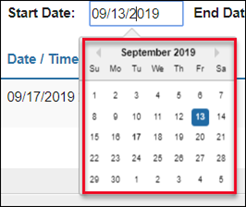
When a change is made to the template and is clicked, a new entry is created in the Change History. Entries are arranged from newest to oldest, with the current version of the template at the top.
To see a previous version of the template, click View Revision.
The Revision history modal will open.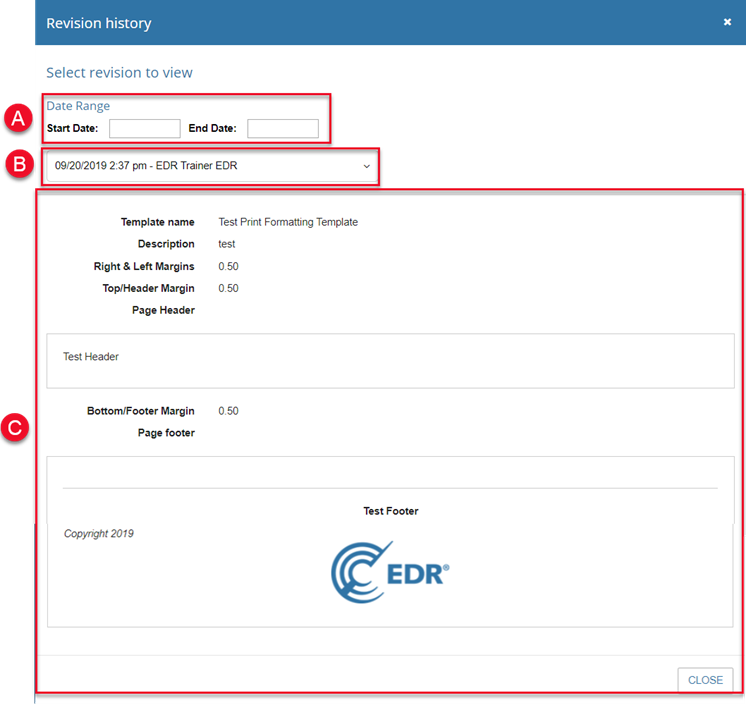
A. Filter the available revision items in section B by a specific date range.
B. Select a revision entry from the drop-down menu to display that revision snapshot.
C. View the Print Formatting Template at the time of the snapshot. This includes Template Name, Margins, and the Header and Footer content.
Sticky Footer
The sticky footer contains two buttons.
Cancel: Click to discard the Print Formatting Template and return to the Print Formatting Templates page. Note that you will NOT be prompted for confirmation.
Save and Create Template: Click to save the new Print Formatting Template and close the page. If any required fields have not been completed, a warning will appear at the top of the screen; you will be unable to save until the required fields have been completed. When editing a template that has been saved, this button will instead be labelled “Save Changes.”
.png)

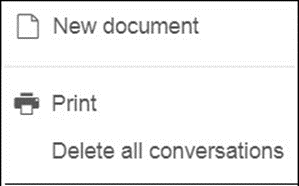
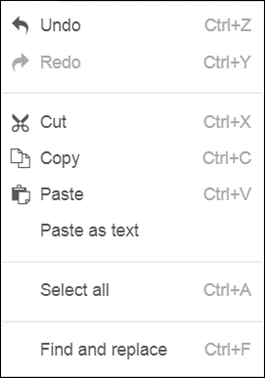
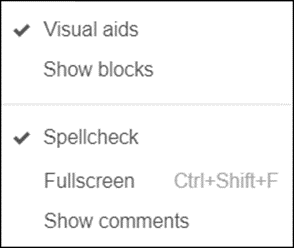
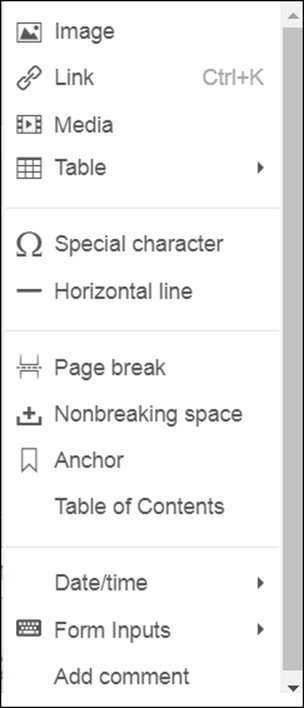
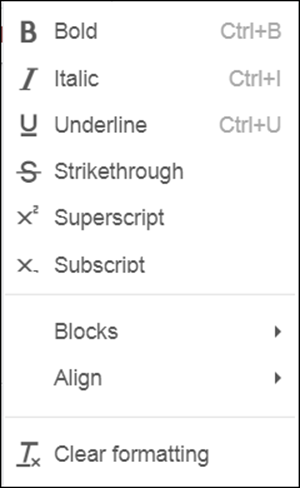

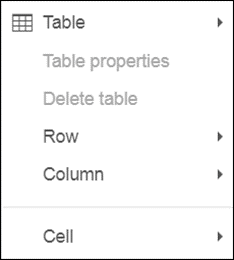








.png)